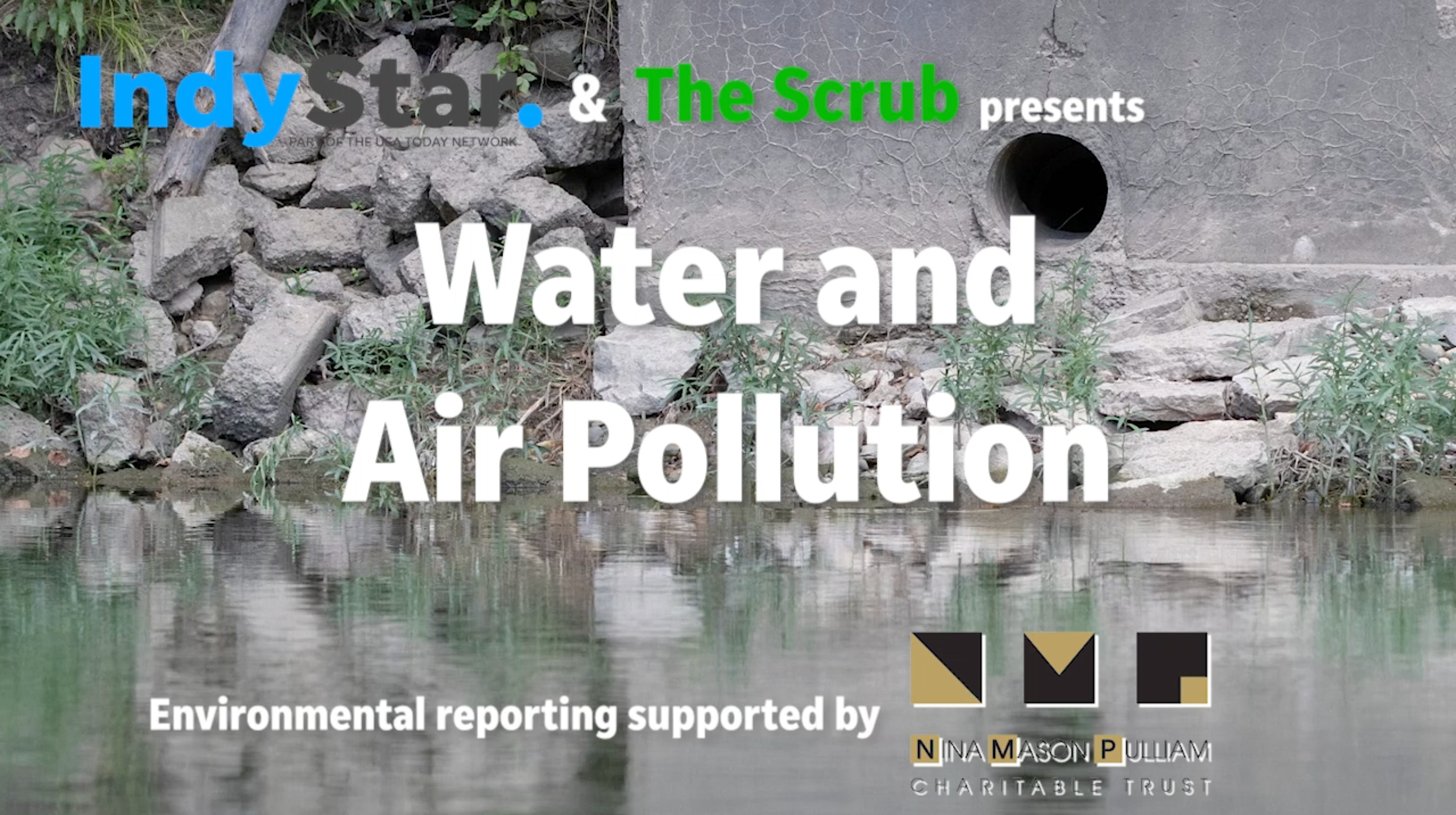
Water and Air Pollution
Pollution in Indiana’s air and waterways could be having an impact on public health. We talked to experts about how the state should clean it up.
Indianapolis Star
Last week the Trump administration eased pollution regulations for dozens of industrial sites across the country that spew toxic emissions — two of which operate inside Indiana.
Across a series of four proclamations, the White House gave the roughly 90 facilities — chemical manufacturers, sterilization facilities, power plants — an additional two years to meet hazardous air pollution rules set by the EPA under the Biden administration.
The new proclamations will allow certain facilities to keep operating under the EPA’s old regulations until roughly 2028 and 2029, although individual deadlines vary.
In Indiana, a chemical manufacturing plant in Mount Vernon, SABIC Innovative Plastics, and a medical equipment sterilization facility in Ellettsville, operated by Cook Medical, both received extensions.
Some Hoosiers are concerned the move deprioritizes human health.
The government claims “that meeting compliance is too burdensome/expensive to the business but not meeting the compliance levels can be very burdensome to the health of nearby communities,” Gabriel Filippelli, a biochemist and urban health researcher at Indiana University, wrote to IndyStar in an email.
“These standards have been developed for solid, scientific reasons, and this feels like rolling back protections for people to enhance profits for companies.”
Environmental advocates say pollution standards exist for a reason
The Clean Air Act allows pollution compliance extensions if the technology needed to meet standards isn’t available and if the exemptions are in the national security interest of the United States.
The White House is arguing both points.
“SABIC appreciates the Trump administration’s decision to grant regulatory relief,” Jennifer Schumann, a spokeswoman for the Mount Vernon plant, wrote in a statement to IndyStar. There isn’t an “off the shelf solution” for compliance with the 2024 EPA regulations, she added — rather, the technology needs to be engineered and constructed.
The American Chemistry Council, which represents manufacturers like SABIC, maintained the cost of meeting pollution regulations could exceed $50 billion, per a partially filled records request that the IndyStar obtained from the EPA.
Advocates for environmental and public health say the exemptions are examples of the administration putting profit over human and environmental health.
An EPA assessment for the plants in Mount Vernon and Ellettsville places both facilities on the high end of riskiness to human health, after considering the amount of chemicals released onsite, the degree of toxicity and the size of the exposed population.
“There were regulations put in place by experts based on what is good for human health,” said Heather Navarro, the director of the Midwest Climate Collaborative, a climate change response network which includes Indiana University and the City of Indianapolis. “Now we’re saying that what’s more important is profit. And I think that’s hugely problematic, and that should concern every American.”
It isn’t yet clear if or how the administration will address the potential public health impacts of two-year exemptions. And while it’s hard to gauge exactly how two additional years of non-compliance will impact communities downwind of pollutants, the exemption “equals two years of potentially profound impacts on community health,” according to Filippelli.
One proclamation targeted exemptions at 39 medical equipment manufacturing facilities, which often use the gas ethylene oxide to sterilize their products.
Ethylene oxide is highly effective, but it’s also a carcinogen that can leak out of vents during the sterilization and aeration process, according to the EPA.
In a 2024 report, the EPA wrote many medical sterilization facilities in the United States are located near residences, schools and communities with environmental justice concerns. They determined the use of ethylene oxide at several of the plants pose “high lifetime cancer risks to surrounding communities.”
“It’s a really useful compound in manufacturing everything from sterilizations to manufacturing things like antifreeze and polyester,” said Shannon Anderson, the directory of advocacy at Earth Charter Indiana. “But it’s also incredibly dangerous to human health. It’s a carcinogen. It’s responsible for all kinds of respiratory inflammation and chronic inflammation and it can damage your nervous system. And in certain quantities, it can be fatal.”
The Cook Medical plant treats tens of thousands of pounds of ethylene oxide every year, but the facility’s emissions and discharges of the toxic chemical have dropped drastically since 2019, according to EPA data. In 2023, the EPA reported 11 pounds of ethylene oxide at Cook Medical in Ellettsville were disposed of or released.
Cook Medical declined to comment on why they applied for an exemption.
A separate proclamation directed two-year exemptions at chemical manufacturers and refineries, like the SABIC plastic plant in Mount Vernon. The SABIC plant develops thermoplastics, and in 2023, it released several million pounds of chemicals on and offsite, according to the EPA.
Schumann, SABIC’s spokeswoman, told IndyStar in a statement the emissions standards for hazardous air pollutants impose “substantial and costly additional burdens on chemical manufacturers already operating under stringent regulations,” and the company will continue to uphold the “highest standards” in their environmental stewardship.
But environmental advocates aren’t convinced the burdens of monitoring and regulating air pollution can just dissipate with a presidential proclamation.
“This is simply shifting that burden to the public with increased healthcare costs, with increased damage to the local environments, and ultimately with their lives,” said Anderson. “The burden doesn’t go away. It simply shifts.”